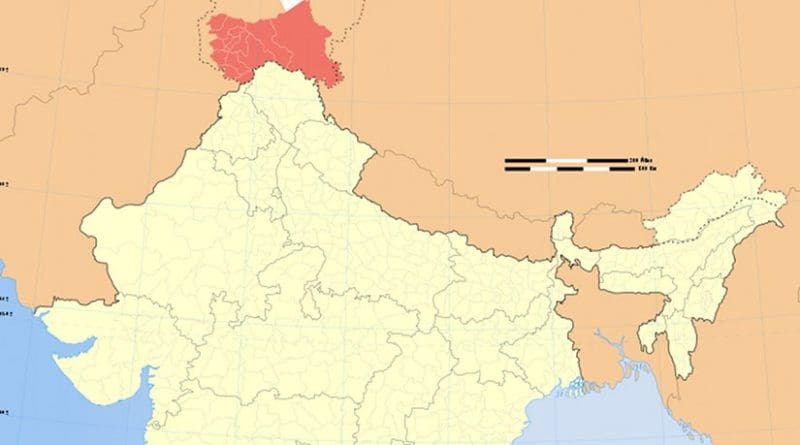Handling J&K: What Is Right And What More Needs To Be Done? – Analysis
By IPCS
By Lt Gen (Retd) Syed Ata Hasnain*
As the Kashmir Valley stabilises just a bit, there is the lurking fear that the next big negative event may not be very far in the future. In such an environment, it may be good to take stock of trends that may contribute to further improvement and be aware of faults that need to be focused upon and rectified.
The first of the positives is the obvious resilience being displayed by the J&K Police in the face of serious intimidation of its rank and file ever since mid-2016. Kashmiri police personnel have suffered from a strident campaign brought against them with vengeance. From the killing of SHO Achabal and his team of comrades to the lynching of DSP Ayub Pandith, targeting of unarmed traffic policemen and even policemen on leave the J&K Police personnel of the Valley have borne immense pressure both while performing duties and off duty hours. In the face of this intimidation and the sanctioned threats endorsed by the Separatists there were times when some police families had to virtually beg forgiveness from Separatists.
There is something very correct about the training of J&K policemen and the ethos with which they serve. However, this loyalty should not remain unrecognised. The Army, one of the biggest benefactors of police loyalty and effectiveness, must continue to respect it and strive to work together at different levels. Incidents like the one at Gund police station in Ganderbal district work against the joint effectiveness of the two strongest Indian institutions.
For all these years we have known exactly what role finance and networks play in the sustenance of violence and anti-national activities in Kashmir. Somehow there appeared to be tremendous reluctance to act against these. In fact there was official addition to the coffers of the Separatists through legitimate payments for travel, medical and other assistance. A media house’s sting operation has become the trigger for revelation of details of conduits that make up these networks. In Iraq, the effectiveness of the Islamic State (IS) reduced very largely once the oil finance networks and the money from the looted treasury began to dwindle. The National Investigation Agency’s serious investigation is already leading to loss of Separatist effectiveness. Sustained efforts at making financing almost impossible will prevent the supply of military withdrawal, draw away potential stone throwers, compromise the rising strength of vigilantes in rural mosques and force LoC infiltration guides out of business. A possible fifty per cent reduction in overall anti-social activity will be possible over the next few months but sustainability is the key.
Linked to the financial conduits is the issue of trans-LoC trade. In the 10 years of its existence since 2008, there has been little concern towards formalising this trade and taking it to the next level with barter giving way to an institutionalised banking system. J&K Chief Minister Mehbooba Mufti’s Jammu and Kashmir Peoples Democratic Party (PDP) party had invested much in this initiative but has been unable to convince the Centre to go beyond. As one of the avenues of illegal movement of money, drugs and sim cards, the trade is now under threat and could become a bone of contention between the coalition partners.
The missing link is the diffused, leadership which apparently holds more power than the largely discredited Hurriyat leadership. Now that the latter is under the scanner for a range of anti-social activities, its usefulness to the establishment being questionable, the time is ripe to ascertain and identify the source that sustains the rabble rousing. There is no doubt that the infrastructure for anti-social activity remains the one set up and nourished by the Hurriyat. While identifying the new leadership the Indian security establishment must turn focus on this infrastructure and neutralise it leaving little scope for revival.
The handling of the Amarnath Yatra tragedy involving the unfortunate death of seven pilgrims in a terror attack should give the existing coalition government more confidence. The after effects being comparatively much lower due to public and political maturity should have a telling psychological effect on the sponsors of proxy war and the public. It motivated the chief minister to send a strong message to her party members that disconnect from the people of South Kashmir, once their bastion, cannot continue on the pretext of the adverse security situation. However, if the chief minister has to walk this talk it will need the support of one organisation which can make all the difference, the Army; it has the deployment, reach, contact with people and the robust ability to secure a grand engagement plan. It cannot be a creeping plan. It just has to be bold with transformational approach. All the talk about not talking will vanish once the government, the politician and security forces are speaking with the people and not the leadership. It is not difficult but needs imagination and a positive mindset.
Lastly, soon the Yatra will end and the special additional forces would have done their job. For the Army, no return to base for these units is strongly recommended. More troops will help in denying the terrorists space and through the next three to four months, will ensure that operations in South Kashmir can be more proactive.
With change of government in Pakistan one should expect more unpredictability. The form in which it will manifest is something for us to ponder.
* Lt Gen (Retd) Syed Ata Hasnain
Member, Governing Council, IPCS, & former GOC, 15 Corps, Srinagar

